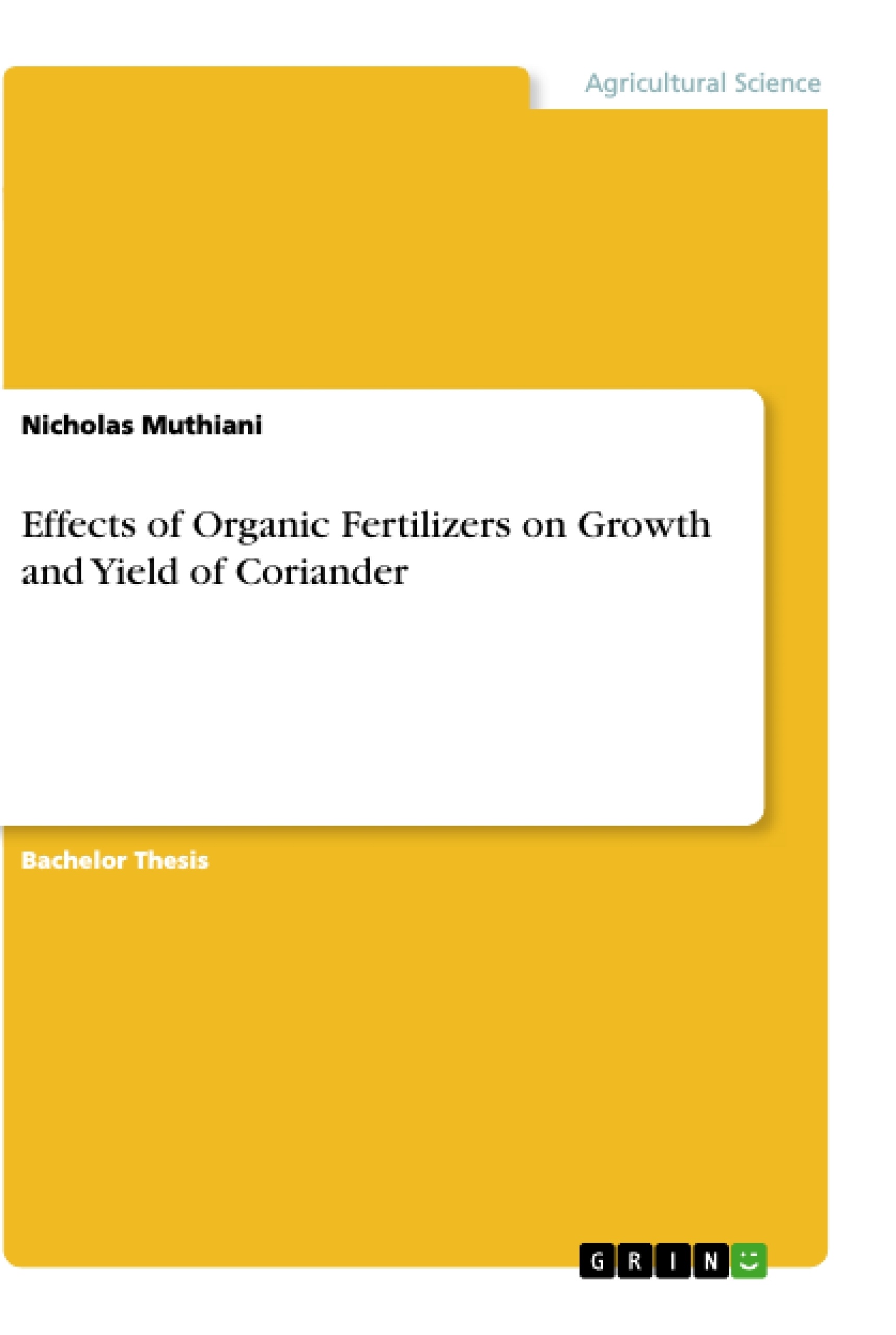Hypothesis: Cow dung manure has no effects on coriander development and final yield.
Coriander (Coriandrum sativum) is one of the most important spice and medicinal plants belonging to the family Apiaceae. It is also known as cilantro (American: cilantro). It can be grown on a variety of soil and prefers light, well drained, moist, loamy soil and can also grow on heavy black soil. It provides significant amount of Dietary fiber, Calcium, Selenium, Iron, Magnesium and Manganese per 100 gm. Generally, organic matter is added to soil to increase its fertility and to improve the physical structure for increased agricultural production. Previously, many investigators have reported beneficial uses of organic matter due to the presence of plant growth nutrients. Cattle manure is a source of nitrogen which is a vital nutrient for the activity of coriander growth. It is a fraction of many components such as amino acids, nucleic acids and chlorophyll. The use of cattle manure has been reported as a potential factor for vegetative growth. The experiment was conducted in Western Kenya, Bungoma County in Kibabii university farm.
Table of Contents
DEDICATION
ACKNOLEDGEMENTS
ABSTRACT
LIST OF TABLES
1 INTRODUCTION
1.1 PROBLEM STATEMENT AND JUSTIFICATION
1.2 GENERAL OBJECTIVE
1.3 SPECIFIC OBJECTIVE
1.4 HYPOTHESIS:
2 LITERATURE REVIEW
2.1 Coriander Production
2.2 Coriander Varieties in Kenya
2.3 Ecological requirements
2.4 Scientific classification of coriander
2.5 Organic manure
2.6 Benefits of cattle manure
2.7 Nutrient composition of cow manure
2.8 Estimating manure application rates
2.9 Manure application
2.10 Nutritional deficiencies of coriander
2.11 Nutritional composition of coriander
2.12 Medicinal importance of coriander
2.13 Coriander processing
3 METHODOLOGY
3.1 STUDY LOCATION
3.2 FARM LAYOUT
3.3 SOIL SAMPLING
3.4 MATERIALS
3.5 STUDY DESIGN
3.6 DATA COLLECTION
3.7 DATA ANALYSIS
3.8 EXPERIMENTAL MODEL
4 RESULTS
4.1 Treatment effect on percentage germination
4.2 Treatment effect on the number of plants per plot
4.3 Treatment effect on percentage disease incidence
4.4 Treatment effect on the plant height of coriander
4.5 Treatment effect on the leaf length of coriander
4.6 Treatment effect on number of diseased plants per plot
4.7 Treatment effect on the weight of coriander
4.8 Treatment effect on leaf width of coriander
5 DISCUSSION
5.1 Treatment effect on percentage germination of coriander
5.2 Treatment effect on percentage disease incidence
5.3 Treatment effect on the plant height of coriander
5.4 Treatment effect on the leaf length of coriander
5.5 Effect of treatment on fresh weight
5.6 Effect of treatment on dry weight
5.7 Treatment effect on leaf width of coriander
5.8 Treatment effect on soil PH
6 CONCLUSION
7 RECOMMENDATIONS
8. REFERENCES
- Quote paper
- Nicholas Muthiani (Author), 2021, Effects of Organic Fertilizers on Growth and Yield of Coriander, Munich, GRIN Verlag, https://www.grin.com/document/1140827
-

-

-

-
Upload your own papers! Earn money and win an iPhone X. -

-
Upload your own papers! Earn money and win an iPhone X. -

-
Upload your own papers! Earn money and win an iPhone X. -

-
Upload your own papers! Earn money and win an iPhone X. -

-
Upload your own papers! Earn money and win an iPhone X. -

-
Upload your own papers! Earn money and win an iPhone X. -

-
Upload your own papers! Earn money and win an iPhone X. -

-
Upload your own papers! Earn money and win an iPhone X. -

-
Upload your own papers! Earn money and win an iPhone X. -

-
Upload your own papers! Earn money and win an iPhone X.

